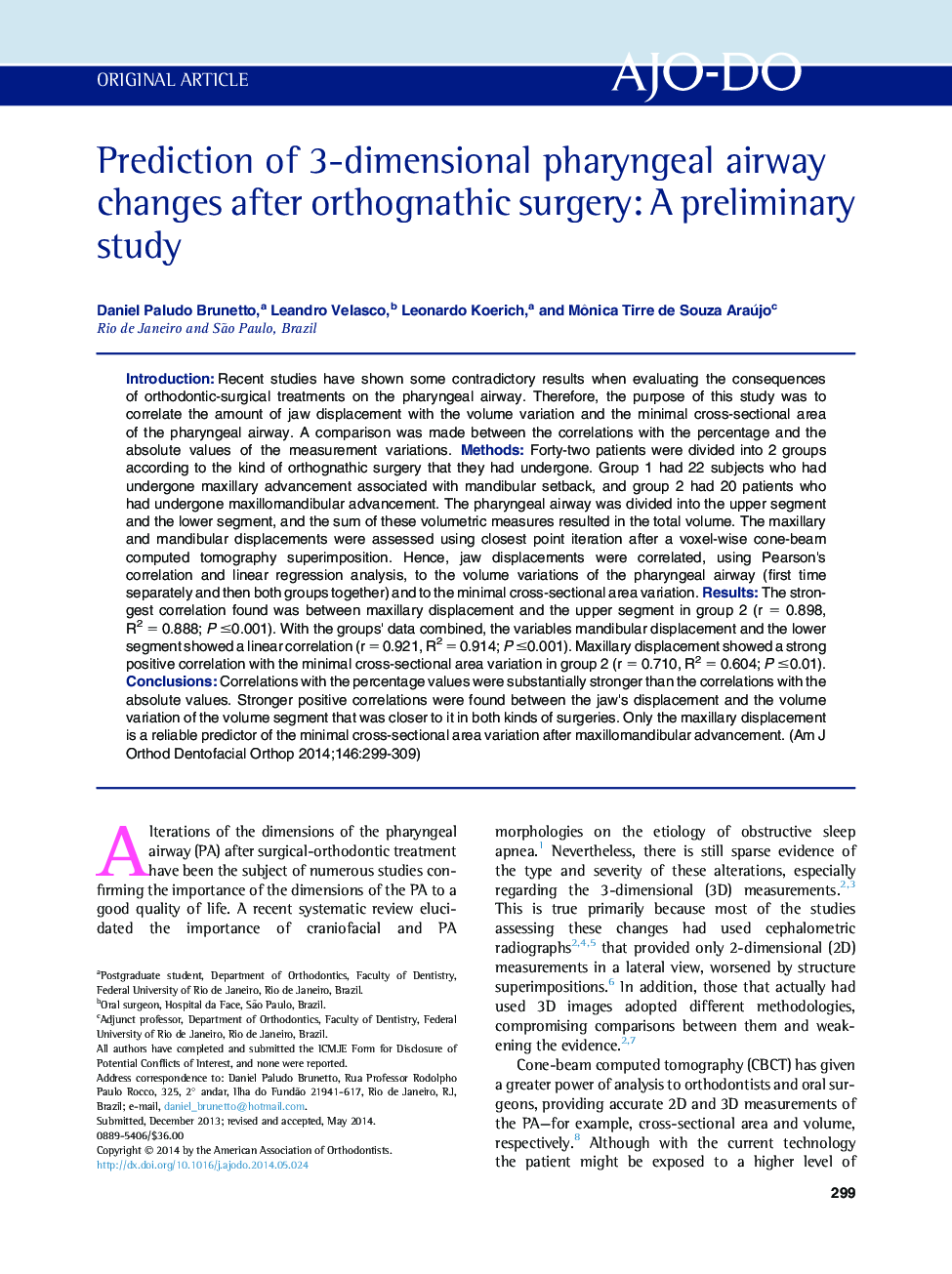| Article ID | Journal | Published Year | Pages | File Type |
|---|---|---|---|---|
| 3116469 | American Journal of Orthodontics and Dentofacial Orthopedics | 2014 | 11 Pages |
•Jaw displacement was correlated with percentage of volume variation.•Mandibular displacement influenced the upper volume segment.•Pharyngeal airway changes should be assessed by comparing percentage values, not absolute values.•Variation of the pharyngeal airway upper volume should be predicted separately for each kind of orthognathic surgery.
IntroductionRecent studies have shown some contradictory results when evaluating the consequences of orthodontic-surgical treatments on the pharyngeal airway. Therefore, the purpose of this study was to correlate the amount of jaw displacement with the volume variation and the minimal cross-sectional area of the pharyngeal airway. A comparison was made between the correlations with the percentage and the absolute values of the measurement variations.MethodsForty-two patients were divided into 2 groups according to the kind of orthognathic surgery that they had undergone. Group 1 had 22 subjects who had undergone maxillary advancement associated with mandibular setback, and group 2 had 20 patients who had undergone maxillomandibular advancement. The pharyngeal airway was divided into the upper segment and the lower segment, and the sum of these volumetric measures resulted in the total volume. The maxillary and mandibular displacements were assessed using closest point iteration after a voxel-wise cone-beam computed tomography superimposition. Hence, jaw displacements were correlated, using Pearson's correlation and linear regression analysis, to the volume variations of the pharyngeal airway (first time separately and then both groups together) and to the minimal cross-sectional area variation.ResultsThe strongest correlation found was between maxillary displacement and the upper segment in group 2 (r = 0.898, R2 = 0.888; P ≤0.001). With the groups' data combined, the variables mandibular displacement and the lower segment showed a linear correlation (r = 0.921, R2 = 0.914; P ≤0.001). Maxillary displacement showed a strong positive correlation with the minimal cross-sectional area variation in group 2 (r = 0.710, R2 = 0.604; P ≤0.01).ConclusionsCorrelations with the percentage values were substantially stronger than the correlations with the absolute values. Stronger positive correlations were found between the jaw's displacement and the volume variation of the volume segment that was closer to it in both kinds of surgeries. Only the maxillary displacement is a reliable predictor of the minimal cross-sectional area variation after maxillomandibular advancement.
